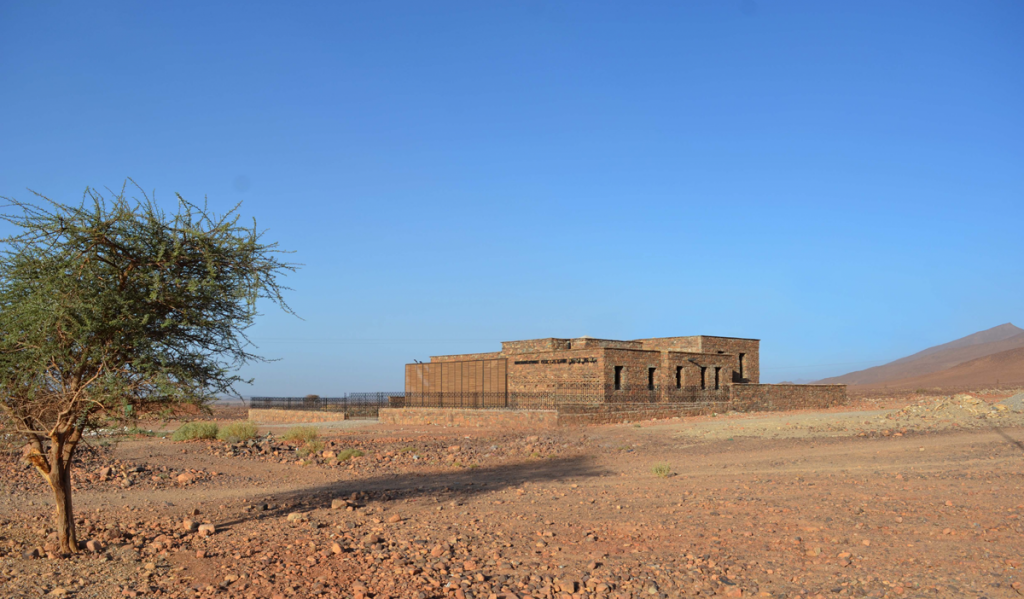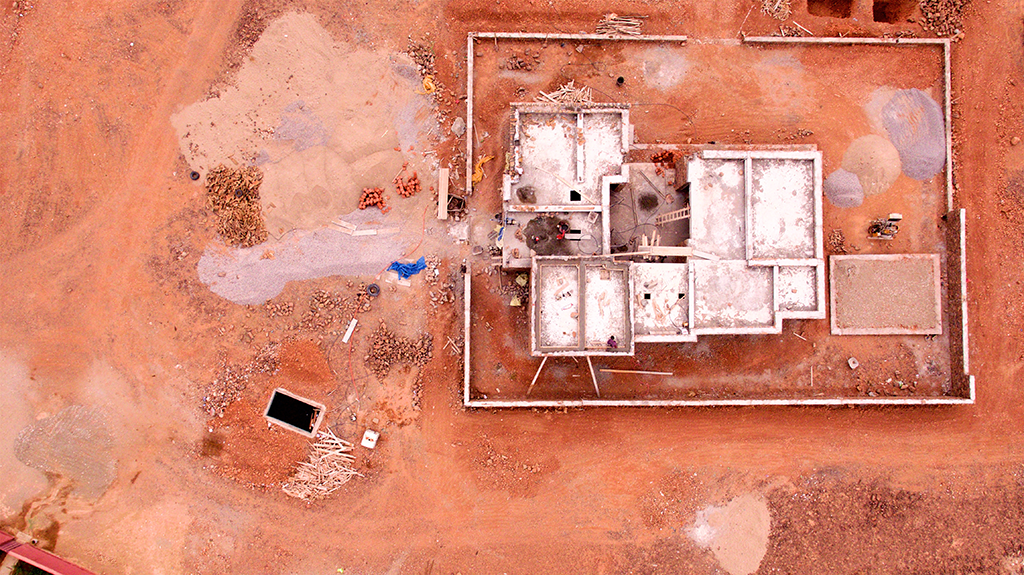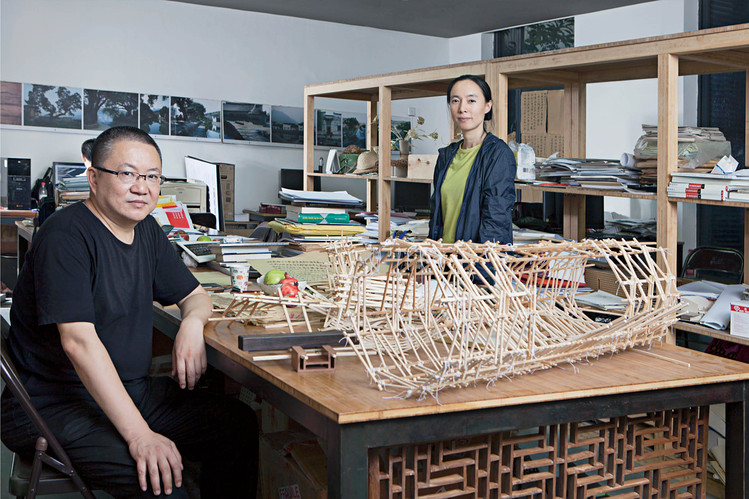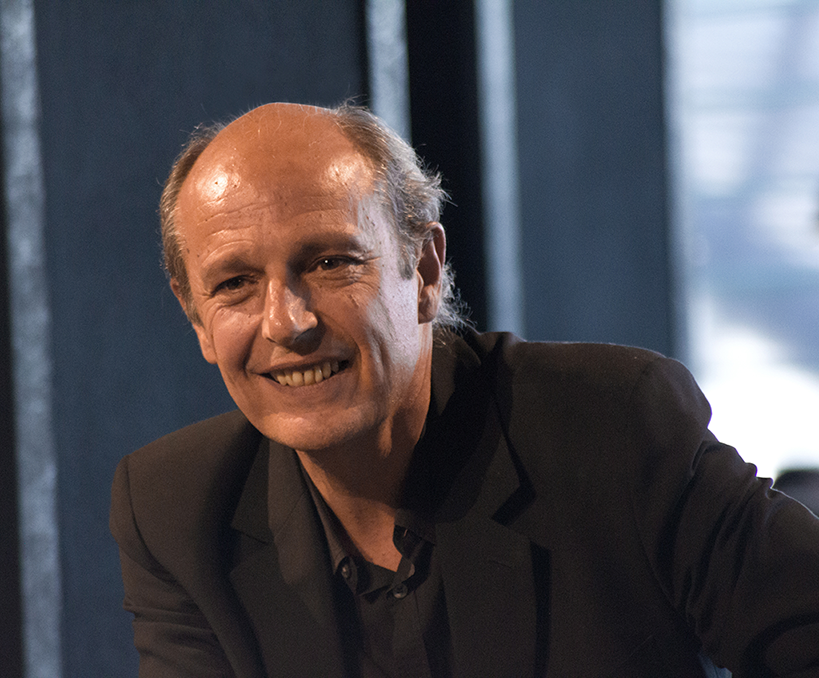Salima Naji, beyond the aesthetics of heritage
For the last 15 years, architect and anthropologist Salima Naji has been working on bringing back to life the vernacular building techniques in Morocco. There is nothing dogmatic about her dedication. For Naji, what is of foremost importance is the recognition of a responsible architecture, whose “capacity to resist” is both a subject to be preserved and an object for reflection. In AA’s 426th issue, she writes about her beliefs in an opinion paper illustrated by the Aït Ouabelli cultural centre project.
Find below the pictures of this project, completed in 2018 in the province of Tata in Morocco. A particularly relevant example of Salima Naji’s philosophy.
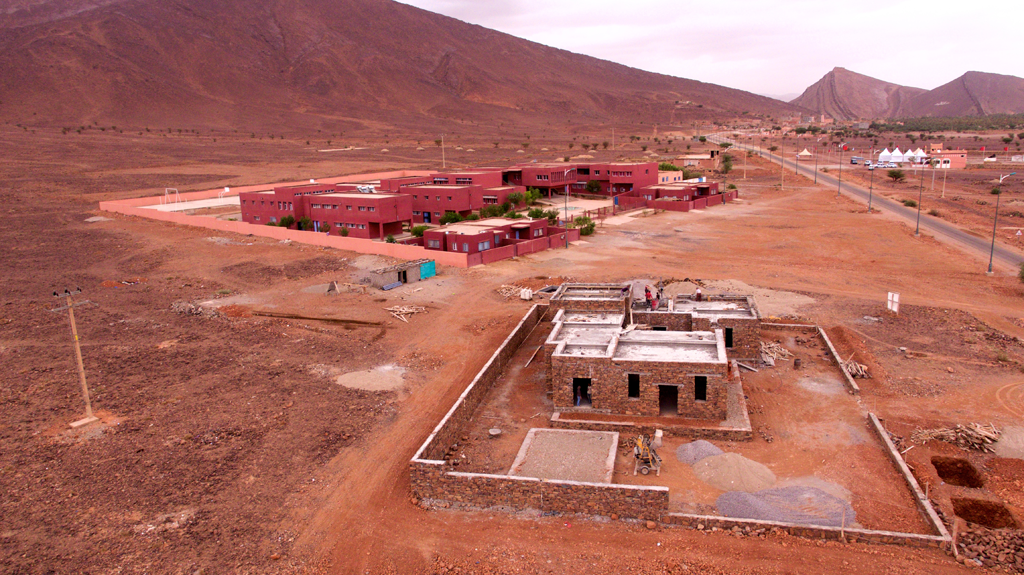
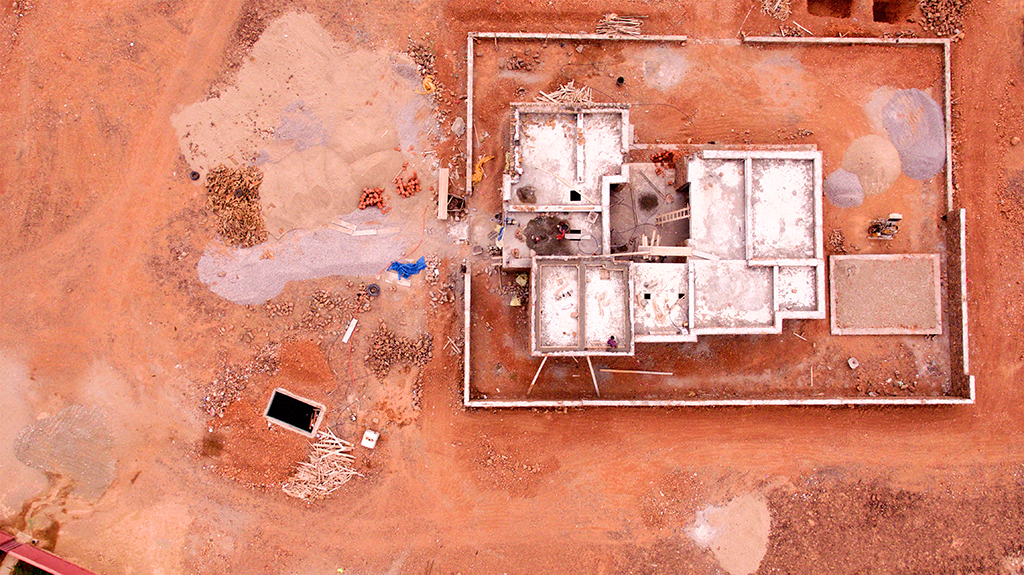
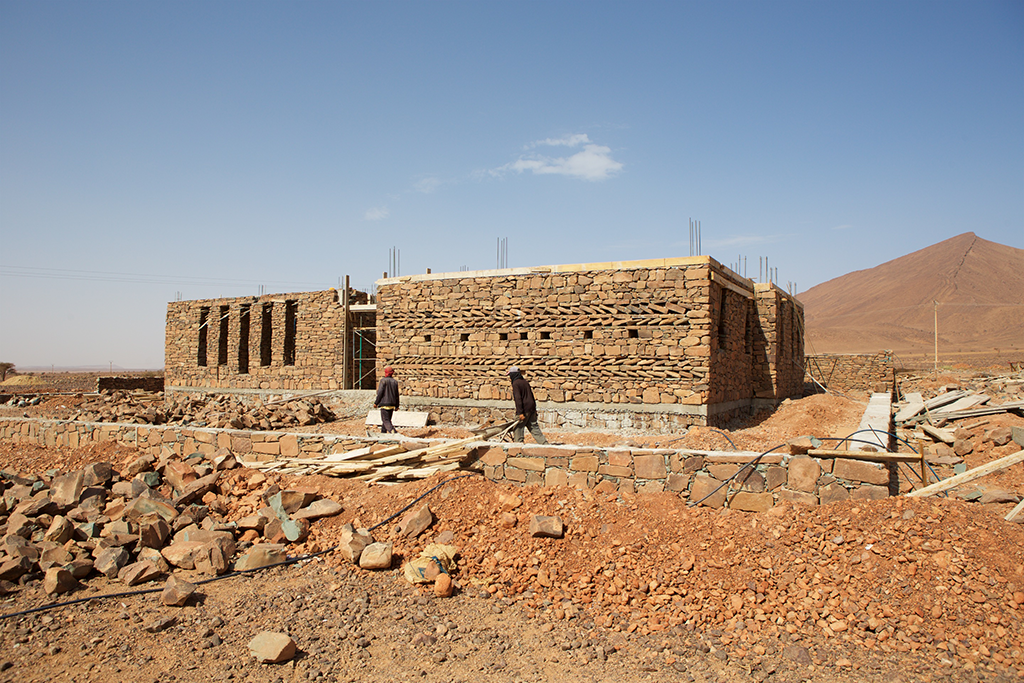
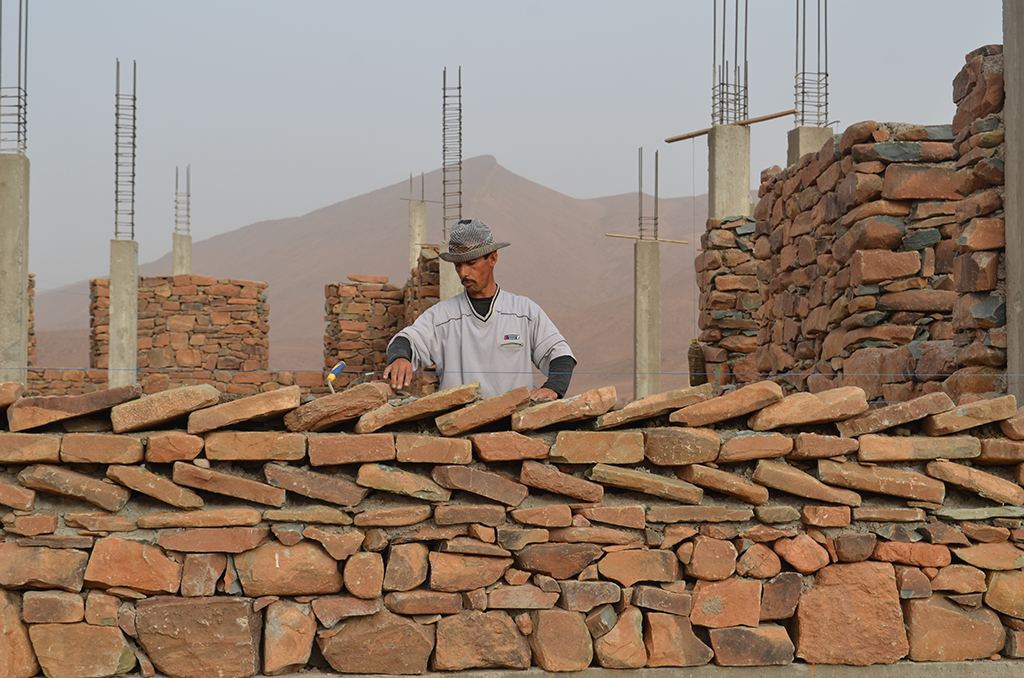
The walls are made of large stones, leaning on a reinforced concrete structure which is imposed by the urban planning code.
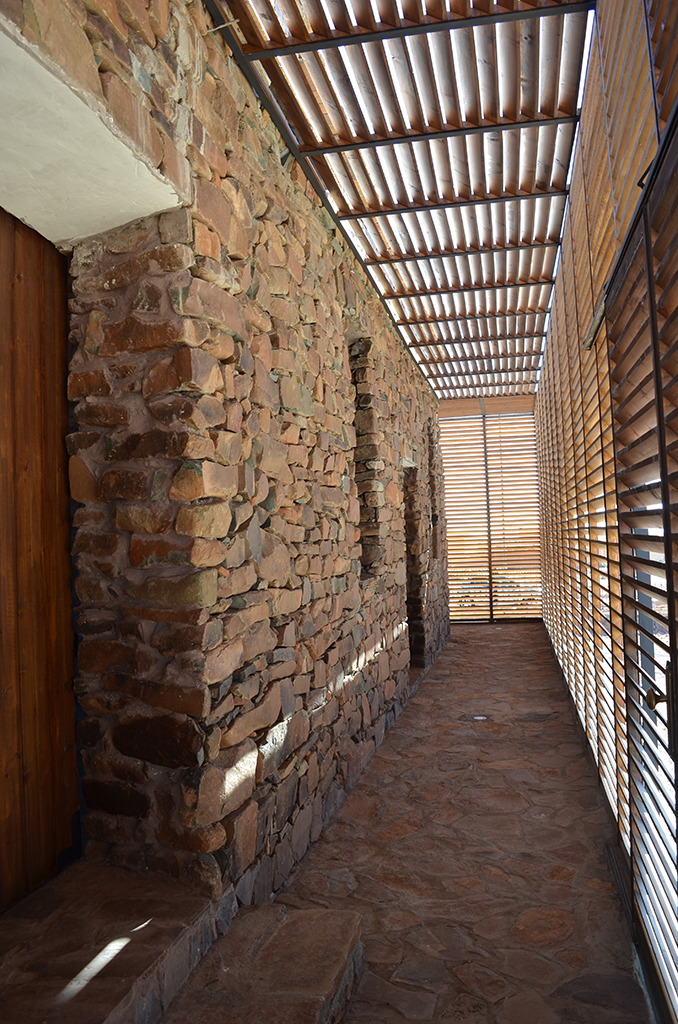
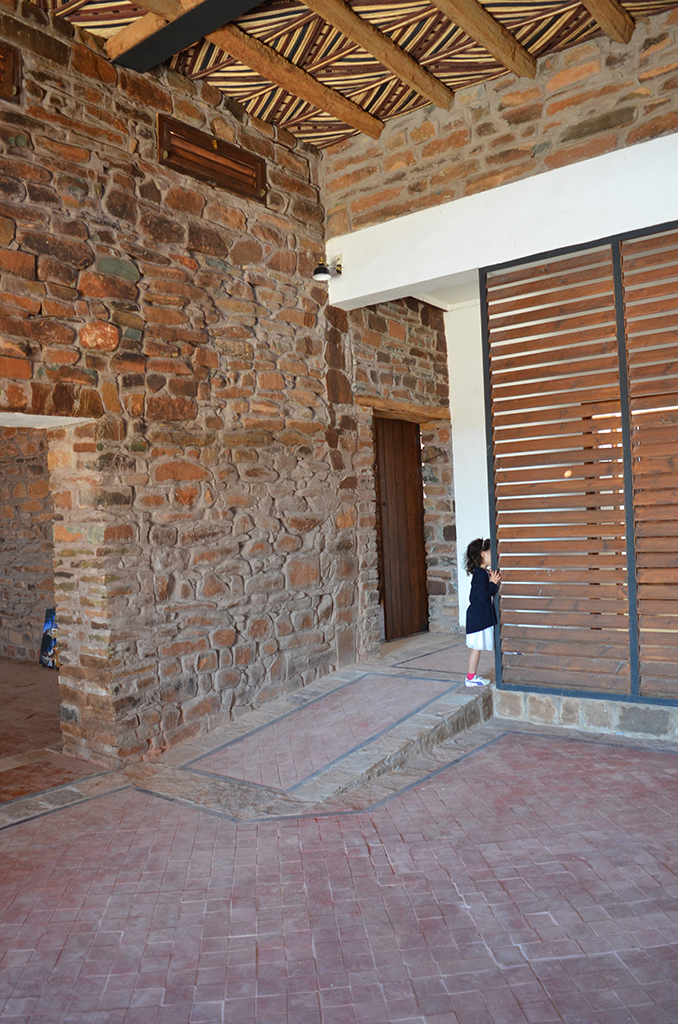
The cladding of the bioclimatic gallery is composed of a metal bracing panel, on which the wooden cleats are pre-assembled. The ceiling is partly made in tataoui, a Moroccan marquetry technique, made with laurel and palm stems. On the floor, local shale paving and Moroccan stucco are coupled to sandstone and tinted cement.
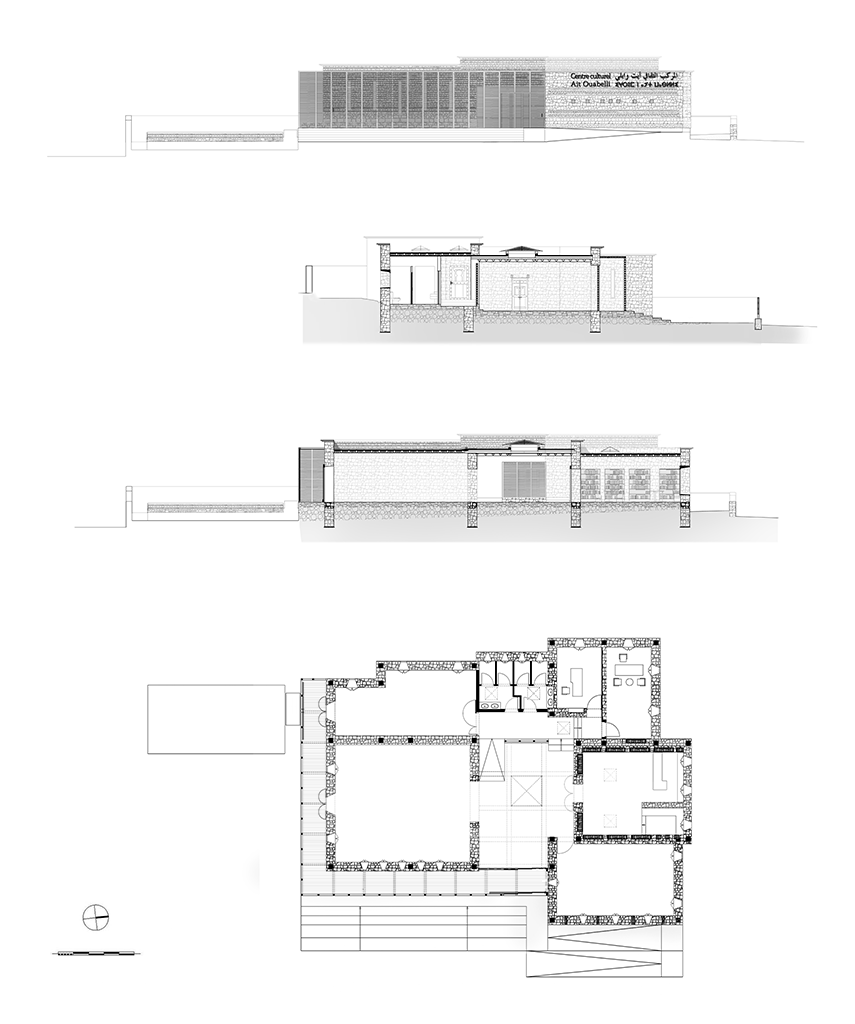
Aït Ouabelli Cultural Centre, Province of Tata, Morocco
Client: Program INDH (national Initiative for the human development), Morocco Ministry of Internal Affairs, Province of Tata
Architect: Salima Naji
Programme: Exhibition hall, multi-purpose hall, multimedia room, educational workshop for children, library, offices, open-air theatre
Surface:
– plot: 588 sqm
– floor space: 280 sqm
Completion: March 2018
Find out more about this project in AA 426. Order the issue, dedicated to commitments in architecture, directly on our online store.

